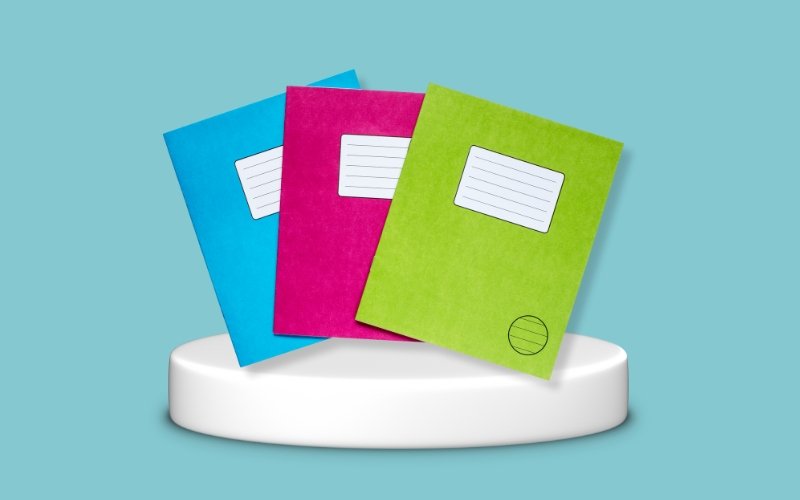
Exercise School Notebook
An Exercise School Notebook is a type of notebook designed primarily for students to take notes, complete exercises, and engage in written practice. It is commonly used in schools for subjects such as mathematics, science, language arts, and other academic subjects. Here’s a detailed description of its key features:
- Size and Dimensions: Exercise school notebooks typically come in various sizes, with A4 (210 x 297 mm) and A5 (148 x 210 mm) being the most common. These sizes offer ample space for students to write and complete exercises clearly and comfortably.
- Paper Type and Layout:
- The pages are usually ruled with horizontal lines to help students write neatly and keep their writing organized.
- Some exercise notebooks feature quad-ruled (graph paper) or half-ruled pages (with a blank section at the top for titles or notes).
- The line spacing may vary depending on the notebook, with options for narrow or wide ruling based on the student’s age or writing needs.
- Cover Design: The covers of exercise school notebooks are typically made from cardboard or paperboard for durability, and they may be coated with a thin layer of plastic for added strength. The cover may come in plain colors or with various designs, including school-related themes, patterns, or illustrations.
- Binding: Exercise notebooks can be staple-bound, spiral-bound, or perfect-bound. The binding ensures the pages stay secure, while spiral-bound notebooks can open fully flat, making them easier to write in. Some notebooks are side-bound (where the pages open from the left side), while others are top-bound (commonly used for certain subjects or exercises).
- Page Count: Exercise school notebooks usually contain a moderate number of pages, often ranging from 50 to 200 pages, depending on the design. This page count provides enough space for students to complete multiple exercises or assignments.
- Usage: Exercise notebooks are used for a variety of school-related tasks, including:
- Writing practice: To develop handwriting skills.
- Problem-solving exercises: For subjects like mathematics, where students write down calculations and solutions.
- Journaling or note-taking: To jot down important points during lessons or lectures.
- Homework and assignments: For students to complete tasks or practice problems.
- Additional Features: Some exercise notebooks may include additional features such as:
- Marginal lines: For students to write headings, titles, or annotations.
- Index or page numbers: To help students easily navigate their notes.
- Blank pages: For creative tasks or drawing.
- Pockets: Some notebooks have a pocket inside the cover to store loose sheets or notes.
- Portability: Exercise notebooks are lightweight and easy to carry in school bags, making them convenient for students to bring to class and use during lessons.
In summary, an exercise school notebook is a practical and versatile tool designed to help students organize their schoolwork, practice writing, solve exercises, and take notes. It’s a staple in any student’s school supplies, aiding in both learning and academic performance.
